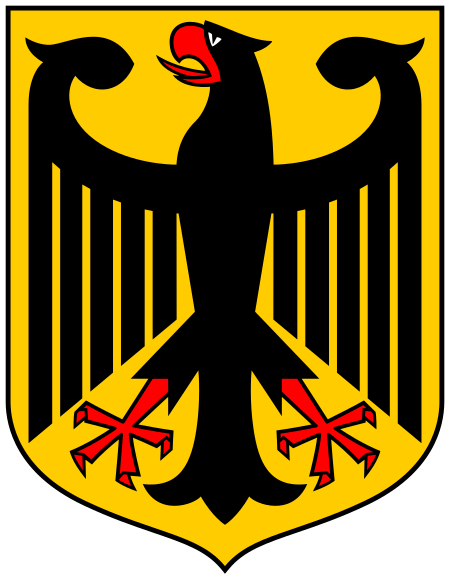Biblical studies
|
Read other articles:

2005 German federal election ← 2002 18 September 2005 (2005-09-18) 2009 → ← outgoing memberselected members →All 614 seats in the Bundestag, including 16 overhang seats308 seats needed for a majorityRegistered61,870,711 0.7%Turnout48,044,134 (77.7%) 1.4pp First party Second party Third party Candidate Angela Merkel Gerhard Schröder Guido Westerwelle Party CDU/CSU SPD FDP Last election 38.5%, 248 seats 38.5%, 251 seats…

Landform in the Grand Canyon, Arizona Wotans ThroneNortheast aspect, from Cape Royal OverlookHighest pointElevation7,721 ft (2,353 m)[1]Prominence596 ft (182 m)[1]Parent peakSiegfried Pyre (7,922 ft)[2]Isolation7.04 mi (11.33 km)[2]Coordinates36°06′17″N 111°57′37″W / 36.1048317°N 111.9602795°W / 36.1048317; -111.9602795[3]GeographyWotans ThroneShow map of ArizonaWotans ThroneShow map of…

「アプリケーション」はこの項目へ転送されています。英語の意味については「wikt:応用」、「wikt:application」をご覧ください。 この記事には複数の問題があります。改善やノートページでの議論にご協力ください。 出典がまったく示されていないか不十分です。内容に関する文献や情報源が必要です。(2018年4月) 古い情報を更新する必要があります。(2021年3月)出典�…

Citizen Cup 1989 Sport Tennis Data 1º maggio - 7 maggio Edizione 12a Superficie Terra rossa Campioni Singolare Steffi Graf Doppio Isabelle Demongeot / Nathalie Tauziat 1988 1990 Il Citizen Cup 1989 è stato un torneo di tennis giocato sulla terra rossa. È stata la 12ª edizione del torneo, che fa parte della categoria Tier IV nell'ambito del WTA Tour 1989. Si è giocato all'Am Rothenbaum di Amburgo in Germania dall'1 al 7 maggio 1989. Indice 1 Campionesse 1.1 Singolare 1.2 Doppio 2 Collegament…

Основная статья: Транспорт Конная упряжка долгое время оставалась наиболее распространённым транспортным средством, использующим для передвижения мускульную силу Автомобили сейчас являются самыми распространёнными транспортными средствами, использующими двигатель �…

2015 video game 2015 video gameChinese Paladin 6Developer(s)Softstar Technology (Beijing) Co. Ltd.Publisher(s)TW: SoftstarCHN: ChangyouNA: EastAsiaSoftDirector(s)Yao ZhuangxianProducer(s)Luan JingComposer(s)Zeng ZhihaoWu XinruiZhou ZhihuaSeriesThe Legend of Sword and FairyEngineUnityPlatform(s)Microsoft WindowsXbox OnePlayStation 4ReleaseMicrosoft WindowsTW: July 8, 2015CHN: July 8, 2015WW: November 14, 2017 (Steam)PlayStation 4NA: April 2, 2019CHN: April 2, 2019Xbox OneTBAGenre(s)Role-playingMo…

Gross pathology of an ovarian carcinoma. Benign, borderline, or malignant neoplasm involving the ovary Ovarian tumors, or ovarian neoplasms, are tumors found in the ovary. They can be benign or malignant (ovarian cancer). They consist of mainly solid tissue, while ovarian cysts contain fluid. Histopathologic classification Ovarian tumors by incidence and risk of ovarian cancer[1] Further information: Ovarian cancer Tumor of the ovary vary remarkably as they may arise from any of the 3 ce…

Tour des Flandres 2017 GénéralitésCourse101e Tour des FlandresCompétitionUCI World Tour 2017 1.UWTDate2 avril 2017Distance260 kmPays BelgiqueLieu de départAnversLieu d'arrivéeAudenardeÉquipes25Partants198Arrivants121Vitesse moyenne40,651 km/hSite officielSite officielRésultatsVainqueur Philippe Gilbert (Quick-Step Floors)Deuxième Greg Van Avermaet (BMC Racing Team)Troisième Niki Terpstra (Quick-Step Floors) ◀20162018▶Documentation La 101e édition du Tour des Flandres a l…

Recreation area in Oregon, U.S. Beachside State Recreation SiteLooking east from the beachShow map of OregonShow map of the United StatesTypePublic, stateLocationLincoln County, OregonNearest cityWaldportCoordinates44°22′53″N 124°05′19″W / 44.3815°N 124.0885°W / 44.3815; -124.0885[1]Operated byOregon Parks and Recreation Department Beachside State Recreation Site is a state park in the U.S. state of Oregon, administered by the Oregon Parks an…

British peer (1900–1990) The Right HonourableThe Lord GardinerCH PC QCLord Gardiner in 1977.Lord High Chancellor of Great BritainIn office16 October 1964 – 19 June 1970Prime MinisterHarold WilsonPreceded byThe Lord DilhorneSucceeded byThe Lord Hailsham of St MaryleboneMember of the House of LordsLord TemporalIn office15 January 1964 – 7 January 1990Life Peerage Personal detailsBorn(1900-05-30)30 May 1900Died7 January 1990(1990-01-07) (aged 89)NationalityBriti…

Laurel Highlands CouncilOwnerBoy Scouts of AmericaHeadquartersPittsburgh, PennsylvaniaCountryUnited StatesFoundedJuly 1, 2011PresidentScott HardyCouncil CommissionerJack BoydeScout ExecutiveTodd McGregor Websitehttp://www.lhcscouting.org Scouting portal Laurel Highlands Council serves youth in Allegheny, Beaver, Bedford, Blair, Cambria, Greene, Indiana, Somerset, and Washington counties in Pennsylvania; Grant, Hampshire, Hardy, and Mineral counties in West Virginia; and Allegany and Garrett…

Unicode ConsortiumPendiri Mark Davis Joe Becker Lee Collins Didirikan diCalifornia, Amerika SerikatTipeKonsorsium nirlabaLokasiMountain View, California, A.S.Tokoh pentingMark Davis (Presiden)Situs webunicode.org Unicode Consortium (Unicode Inc.) adalah organisasi nirlaba 501(c)(3) yang berpusat di Mountain View, California.[1] Tujuan utamanya adalah mengelola dan menerbitkan Standar Unicode yang dikembangkan untuk mengganti skema pengodean karakter saat ini yang ukuran dan lingkupnya te…

Military branch that primarily conducts aerial warfare This article is about the military branch for aerial warfare. For other uses, see Air force (disambiguation). This article needs additional citations for verification. Please help improve this article by adding citations to reliable sources. Unsourced material may be challenged and removed.Find sources: Air force – news · newspapers · books · scholar · JSTOR (January 2013) (Learn how and when to remov…

Recipient of a good, service, product, or idea from a vender or seller For other uses, see Customer (disambiguation). Clientele redirects here. For the British rock band, see The Clientele. Customers at a market for food in Cajamarca, Peru In sales, commerce, and economics, a customer (sometimes known as a client, buyer, or purchaser) is the recipient of a good, service, product, or an idea, obtained from a seller, vendor, or supplier via a financial transaction or an exchange for money or some …

American Colonist, George's sister (1733–1797) Betty Washington LewisBornElizabeth Washington(1733-06-20)June 20, 1733Westmoreland County, Colony of VirginiaDiedMarch 31, 1797(1797-03-31) (aged 63)Culpeper, Virginia, U.S.SpouseFielding LewisChildren11Parent(s)Augustine WashingtonMary Ball WashingtonFamilyWashington family Elizabeth Washington Lewis (June 20, 1733 – March 31, 1797) was an American Colonist. She was the younger sister of George Washington and the only sister that survived…

Polish pole vaulter Władysław KozakiewiczKozakiewicz in 2016Personal informationNicknameWollyNationalityPolish/GermanBorn (1953-12-08) 8 December 1953 (age 70)Šalčininkai, Lithuanian SSR, Soviet UnionEducationPoznań University of Physical EducationHeight1.87 m (6 ft 1+1⁄2 in)Weight82 kg (181 lb)SportCountry PolandSportAthleticsEventPole vaultClubKS Bałtyk Gdynia (1966–1985)Turn-Klub zu Hannover (1985–1989)Coached byWalenty Wejman (1966–1974)Ry…

American legal drama television series (2005–2006) For scripted court show, see Trial by Jury (TV series). Law & Order: Trial by JuryAlso known asLaw & Order: TBJTrial by JuryGenreLegal dramaCreated byDick WolfStarring Bebe Neuwirth Amy Carlson Kirk Acevedo Fred Dalton Thompson Jerry Orbach Scott Cohen Narrated bySteven Zirnkilton (opening only)Opening themeTheme of Law & Order: Trial by JuryCountry of originUnited StatesOriginal languageEnglishNo. of seasons1No. of episodes13Produ…

American country singer (1905–1974) This article is about the singer and actor. For the basketball player, see Tex Ritter (basketball). This article needs additional citations for verification. Please help improve this article by adding citations to reliable sources. Unsourced material may be challenged and removed.Find sources: Tex Ritter – news · newspapers · books · scholar · JSTOR (January 2020) (Learn how and when to remove this message) Tex Ritter…

For the current Liverpool Central station, see Liverpool Central railway station. Former railway station in Liverpool, England This article needs additional citations for verification. Please help improve this article by adding citations to reliable sources. Unsourced material may be challenged and removed.Find sources: Liverpool Central High Level railway station – news · newspapers · books · scholar · JSTOR (August 2009) (Learn how and when to remove th…

البسايس تقسيم إداري البلد المغرب الجهة فاس مكناس الإقليم مولاي يعقوب الدائرة مولاي يعقوب الجماعة القروية سبع رواضي المشيخة لوطة السجع السكان التعداد السكاني 450 نسمة (إحصاء 2004) • عدد الأسر 69 معلومات أخرى التوقيت ت ع م±00:00 (توقيت قياسي)[1]، وت ع م+01:00 (توقيت صيفي)[…


